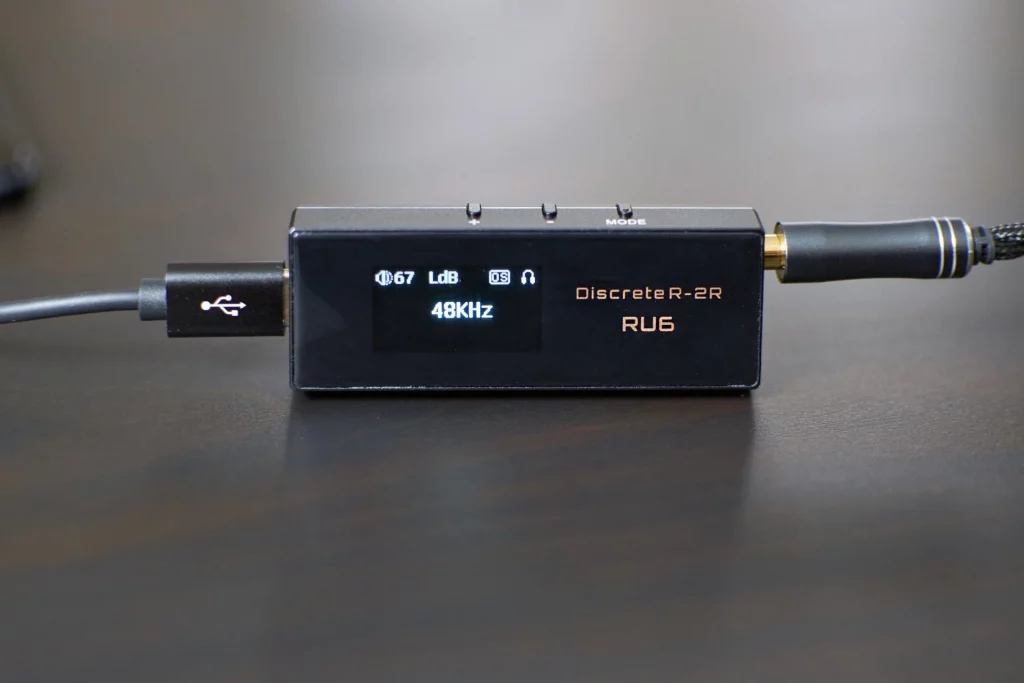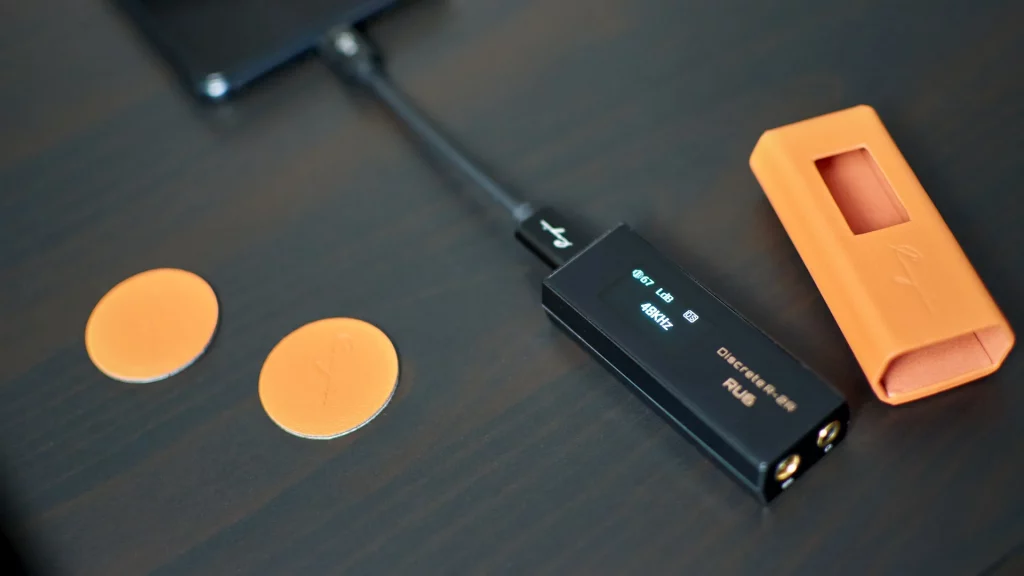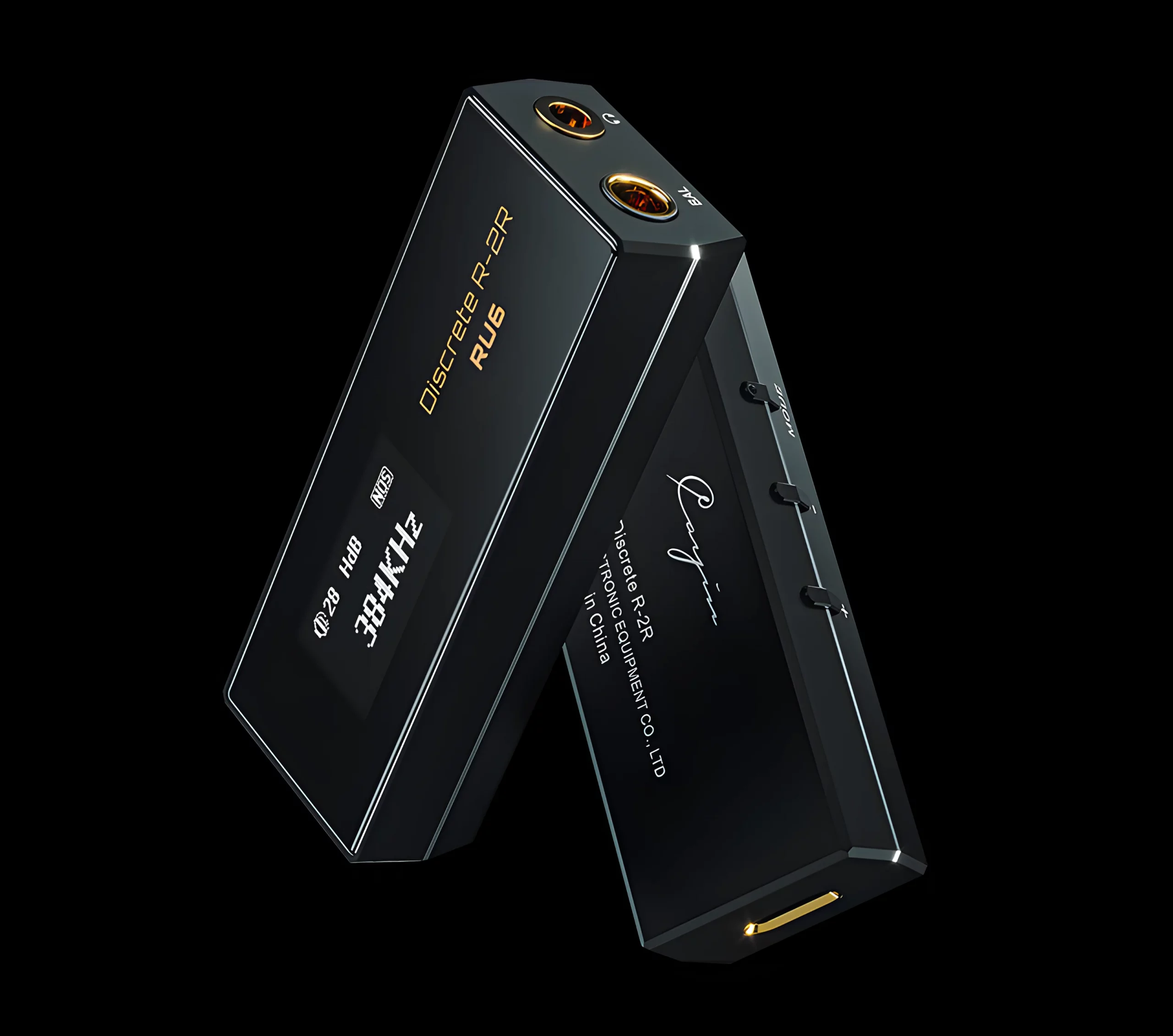If there’s a lack of anything on the market that sure isn’t the lack of portable DAC choices, Cayin RU6 still has something completely different in store for you. It’s not based on any familiar DAC chip coming from Sabre, AK, etc. It is a propper R2R D/A converter based on discrete resistors. And every fan of that kind of DACs is well aware that those are usually bigger than average. So how did this happen – a portable discrete R2R DAC?
Features
Technology is an unstoppable wheel and its advancement makes possible things that were once unimaginable. Cayin used it to bring the good old R2R ladder design to the portable market. To achieve 24bit precision, they used 48 resistors per channel, meaning 96 pieces of high precision resistors in total for stereo decoding. Each of these is a 0.1% high-precision film resistor. But interesting stuff doesn’t stop there because Cayin also decided to implement a discrete 99 steps volume control through 9 segments of resistors and switching relays. This means that no channel imbalance will ever peak its ugly head on this DAC. Being hardware-based this also means that the volume control is completely independent of the operating system to which the RU6 is attached.

Cayin RU6 will support hi-resolution PCM files up to 384 kHz and DSD files up to DSD256 which is all you could ever realistically need. Interesting to mention is that you can choose between OS (Oversampling) and NOS (None oversampling) modes. You use a USB-C port to connect RU6 to the source of your music, but on the other side, there are two analog outs. Good old 3.5 mm output can provide up to 138 mW into 32 Ohm load, while a balanced connection in form of 4.4 mm Pentaconn will offer you 213 mW into the same load. Output impedance is just 0.5 Ohm on Single-Ended out and 1.0 Ohm on Balanced so there shouldn’t be any trouble with very low impedance headphones. To help with matching it to different headphones there is a choice between low and high gain mode too. In my experience, as long as you are reasonable and don’t try to use really high-impedance power-hungry cans, RU6 pairs well with most of the models. The rest of the specs can be found in the table below the article, so we’ll now move to the most important thing.
Sound
If you’re wondering if this small dongle truly sounds like a propper discrete resistor ladder DAC – it does. All of the traits that many expect and love when this kind of conversion is used are there. To start with the star of the show, the midrange is full and lush with a rich timbre. Instruments have a full body and believable weight. Vocals are rendered in a similar fashion but to think that RU6’s presentation is overly sweet and syrupy would be wrong. This full-bodied core is overlaid with an open upper midrange that adds a layer of texture and brightness, making for quite balanced and natural tonality. This creates a sensation of bold, yet open and texture-rich tone. This openness extends to the highest registers too, making for a quite airy presentation.
In terms of detail retrieval, RU6 is not at the front of the pack. The low end is pleasantly warm and weighty but not particularly quick and resolving. The same is true when it comes to sharp edges and quick transients that RU6 doesn’t do all that clean and crisp. It hazes them a bit, but does that gracefully with truly natural softness and already mentioned rich texture. This kind of presentation will not reveal every tiny bit of recorded information, but what is there will sound natural and effortless, and could be listed for hours without any kind of strain.
Cayin RU6 packs a decent punch in the bass and midbass region for such a compact device, but in general, it leans more heavily towards smooth presentation than towards a truly alive and dynamic one. This character will probably push off some of you, but I have no doubts that it will appeal to equally as many listeners. It’s just important to know what to expect from this device and what not to.

Comparisons
Khadas Tea goes for a little bit less at 200USD. It comes with a different form factor and a battery onboard. It offers single-ended output only but is a very capable one. Tea sounds cleaner and has crisper edges, while at the same time maintaining full-bodied tonality. It packs slightly more punch in the lows too. RU6 has a brighter and airier presentation, with a more pronounced texture, but tiny details feel slightly hazier and somewhat more grainy in a direct comparison. For some reason, I feel that tone texture on RU6 is more of an added spice than it is the information dag out of the recording, but it sounds attractive nonetheless. All in all, I feel like Tea is technically a more accomplished device, with a more dynamic and squicky clean presentation. RU6 on the other hand offers a softer, airier, but grainier presentation.
EarMen Colibri is more expensive at 333USD and slightly bigger too due to its battery. It also offers both single-ended and balanced out. RU6 is more affordable and slightly smaller, doesn’t need charging but will use the one on your phone instead. Two DACs are more closely matched over single-ended outputs, and tonal differences explained previously with Khadas Tea (also Sabre-based) stand in this comparison too so I will not repeat it. Switching to balanced inputs however increases the sonic gap and Colibri pulls ahead with a cleaner and crisper sound, more authoritative bassline, better layering, and a more spacious soundstage. I ended up preferring Colibri, feeling it justifies its price premium.
Conclusion
Cayin RU6 successfully brought that recognizable discrete R2R sound to the portable market. Even though it is not technically the most accomplished D/A converter that’ll retrieve the highest amount of details, there’s something else needed to be said here. While preparing this review and comparing RU6 with other DACs, I would often conclude that those models had more punch, more clarity, and quicker bassline and transients… but after some time, I often found myself finishing the playlist late at night using the RU6. This type of sound will not excite you as much as some other DACs but it will most likely soothe your brain and senses after a long and busy day better than most of them. It’s up to you to decide which is more important.
| CAYIN RU6 – CHARACTERISTICS |
|
Discrete R-2R ladder DAC
|






I hesitated to purchase RU6 because of your opinion (7.5 SQ score) but anyway I pulled trigger and purchase RU6 few weeks ago.
After using Questyle M15, Dragonfly RED, Xduoo link2 bal, Ibasso DC04PRO, Hiby FC4, Hiby FC3, Hiby FC1, Apple dac… I can say that RU6 is by far superior to any of them in terms of musicality and real life presentation of music with more than enough resolution sound stage depth hight and everything in between. What happened after purchasing RU6, everything else collecting dust right now. That leads me to think that you have extremely “digital taste” for music 🙂
It’s musicality and natural timbre are top notch and I still love this DAC. The main reason I’m giving it that score is Shanling UA5… but true enough we all have different tastes.